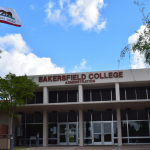Interview Conducted By: Damon Vangelis, Founder & CEO
Dr. James Catanzaro is a long-standing leader in higher education. He served as president of community colleges in four states for nearly four decades, including as President of Chattanooga State Community College for a quarter of a century. During those years and for a decade before, he taught college classes — in classroom, online and hybrid. Jim is currently Executive Director of the Higher Education Research and Development Institute – South (HERDI – South). In this interview with Ocelot, Dr. Catanzaro shares his views about the challenges and opportunities for community colleges in this most disruptive time.
Since many more college students this pandemic year will take hybrid and fully online classes, how can colleges ensure that high-risk students won’t disproportionately fall behind or by the wayside?
JC: This may be the greatest challenge we face. Students of color, students from poverty, students on the margins, many times they face crippling challenges that often defeat their best study efforts. Connectivity, food and shelter security due to loss of part-time employment and family support, even access to educational resources disproportionately plague these students.
When these students are in on-campus classes, faculty can see when they are falling behind, engage them, get them tutors and advisors for physical, emotional and learning support. But these options are not always readily available to online instructors.
The result: we need specific strategies to compensate for the loss of the student support services we’ve built up over decades. We need to recreate them to ensure fertile online learning environments.
Here are some specific recommendations:
a) Colleges must, first and foremost, invest in individual student connectivity – if necessary, supplying students by gift or loan with reliable internet access and the tools to connect beyond their mobile phones. This must be budget commitment number one, recognizing that it may require very large financial and technical commitments including community support.
b) Break online/blended classes into teams of 5 or so, each with a weekly rotating chair, and build assignments around these teams so students establish camaraderie, learn how to work together to produce enhanced projects, papers, etc. This will enable at-risk students to be supported by co-learners, and it will afford them the opportunity to rise and lead the teams when it’s their turn to chair. One additional outcome, employers will be pleased to have recruited graduates who can work in and lead teams.
c) Following Steven Mintz, online faculty should consider themselves learning architects who must continuously connect with their virtual audience.
d) To make this happen come rain or shine, use Ocelot chatbots – also, if available, TAs; and also assign advisors and student ambassadors to ensure that students receive a continuous stream of messages to keep them in the game. Engagement must be our highest priority these days, especially with at-risk students.
e) Use the features of the college’s learning management system (LMS) that enable faculty to build individualized learning paths for students and enable faculty to track each student’s progress and direct them to success.
f) Encourage faculty to build scaffolding into every class – first, to get students to higher order learning, also to discover the specific learning deficiencies students are bringing to the task, some virtually remedial. Scaffolding is the systematic development of each course like a ladder of units, each one building on the others. Following students up the ladder of learning allows for faculty to continuously personalize the learning experience journey. This is especially important for remote, at-risk learners.
Here are links to proven resources all online faculty should review:















